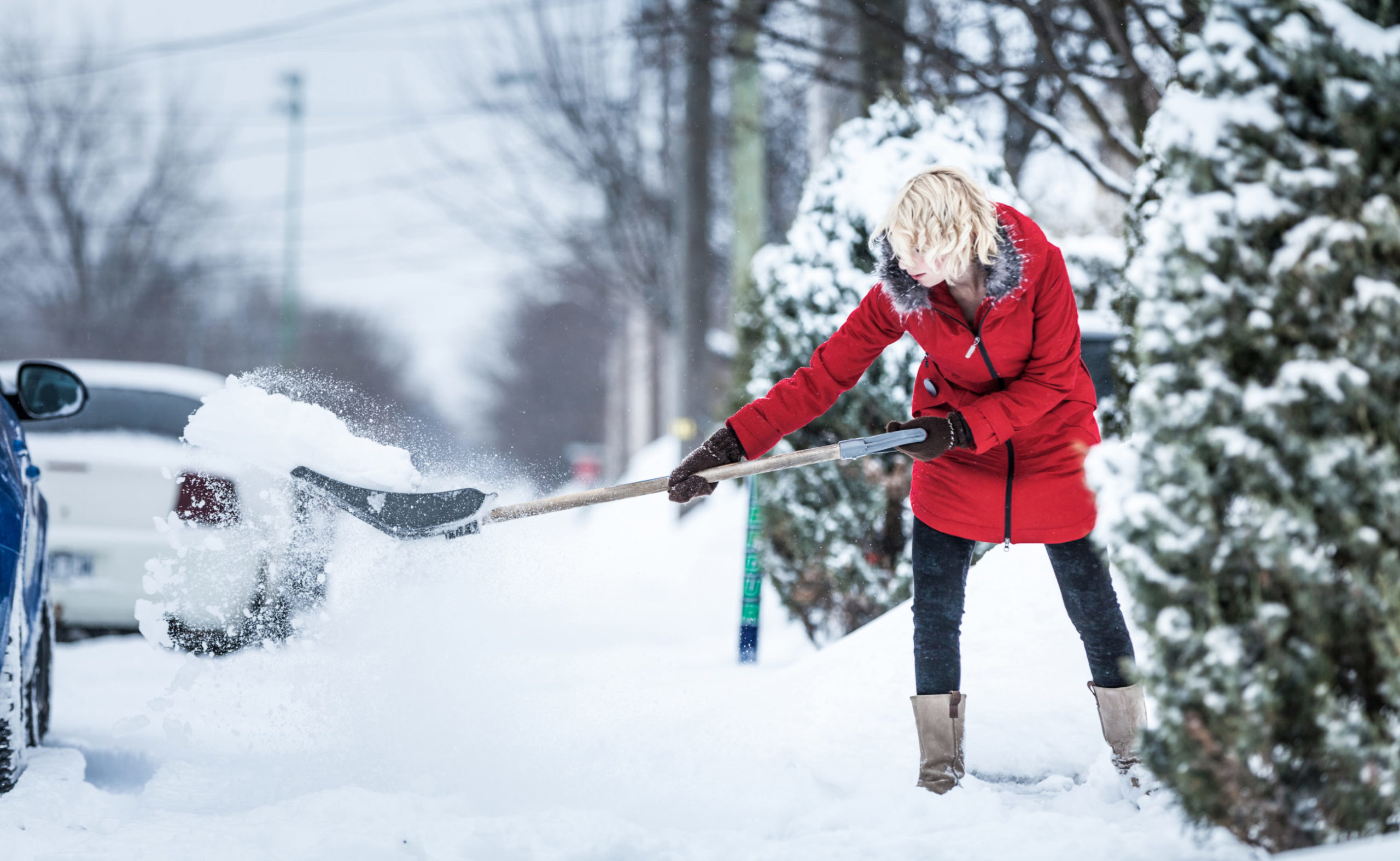December 15, 2022
Healthy Living 
5 ways to avoid low back pain when snow shoveling

Winter brings the tiring task of shoveling snow, which can lead to injury if you’re not careful. A recent study found that roughly 34% of people suffer from lower back injuries while shoveling.* With proper preparation and lifting techniques during the winter season, you can lessen the chances of developing new back problems or worsening any existing lower back pain while clearing your driveway or sidewalk.
Using these simple snow-shoveling techniques will go a long way toward preventing unnecessary pain and injury.
- Manually shoveling is a form of aerobic exercise. Before starting, perform stretching exercises that focus on the back and the hamstrings to help loosen muscles, improve blood flow, and prepare the spine and its supporting muscles for a vigorous workout.
- Hydrating and wearing layers of clothing that are insulating, warm, loose, and water-repelling can help keep the body warm and optimize oxygen supply and blood flow to the muscles. Shoes or boots with good treads will help minimize the chance of an injury from slipping.
- Choose a shovel that allows pushing snow without having to bend at the waist, which helps protect the lower back tissues from sudden movements.
- Begin shoveling small amounts of snow frequently as this is less strenuous than shoveling a large pile at once. Don’t forget to take a break every 10 to 15 minutes. Use this opportunity to drink water and stretch the arms, shoulders, and back to keep them warm and flexible.
- When shoveling, lead with the hips, not the lower back, and push the chest out, pointing forward. Then, bend the knees and lift with the leg muscles, always keeping the back straight. Keep the feet hip-width apart for improved control.
Keep these tips in mind the next time you have to clean up after a snowstorm. Proper preparation can help you stay free of injury this winter.
*Source: The American Journal of Emergency Medicine.
 The Daily Dose
The Daily Dose
Comments are closed.